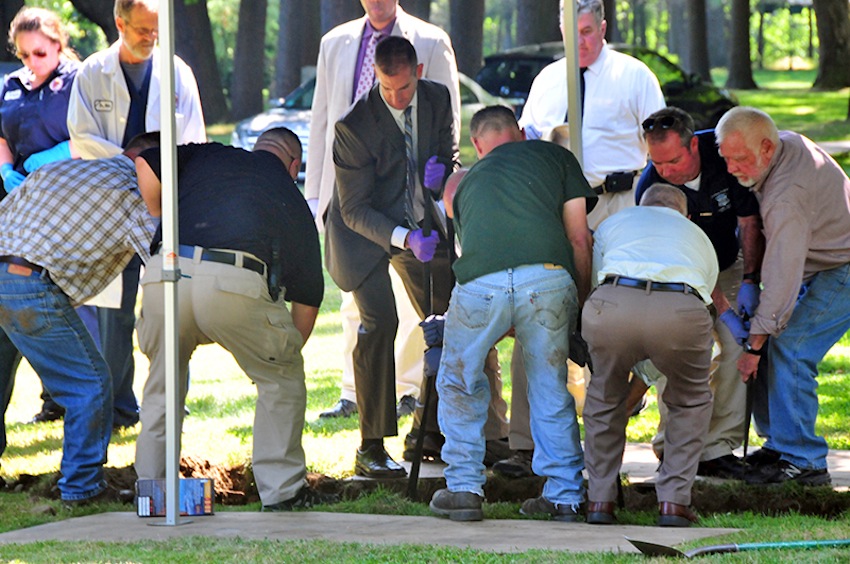Officials Dug Up the Body of the Alleged Boston Strangler
The family of a girl who may have been the Boston Strangler’s last victim is one step closer to finding out who her killer really was.
On Friday, authorities dug up the remains of Albert DeSalvo, the man who claimed to be the Boston Strangler, and who is allegedly responsible for the death of 19-year-old Mary Sullivan in 1964. Sullivan was found raped and murdered in her Charles Street apartment.
The exhumation of DeSalvo’s body took place at the Puritan Memorial Park in Peabody on Friday afternoon, after officials obtained a court ordered warrant authorizing the procedure, as officials used heavy machinery, and workers with shovels, to dig into the dirt and remove DeSalvo’s coffin.
After more than 50 years, “incredible advances” in DNA technology tied DeSalvo to the last of the murders allegedly committed by the Boston Strangler, a series of vicious attacks that haunted the city for 19 months.
According to Suffolk District Attorney Dan Conley’s office, bone and tissue sample from DeSalvo’s remains will be taken by the Boston Medical Examiner’s office, where the body was transferred, and will be tested for DNA in a lab. If a profile can be extracted, it will then be compared to the DNA profile found at the crime scene in Sullivan’s Beacon Hill home, where she was found raped and murdered in 1964.
Orchid Cellmark, an independent lab, will do the testing, said Jake Wark, a spokesman from Conley’s office. “This process is expected to take several days. We expect to announce the results when we have them, which will be next week at the earliest.”
On Thursday, during a joint press conference with Attorney General Martha Coakley and members of the Boston Police Department, officials said they made a major breakthrough in the investigation of Sullivan’s death after they took DNA samples from a relative of DeSalvo’s and matched them with evidence from the crime scene. That test was a “close match,” officials said—so close, that they are expecting the samples from DeSalvo’s body to “result in a positive match,” allowing them to put to rest the questions surrounding Sullivan’s death, and possibly explore other cases that could be tied to the numerous other victims that died at the hands of one of the nation’s first modern-day serial killers.
“For almost five decades, the only link between DeSalvo was his confession. That confession has been the subject of skepticism and controversy from almost the moment it was given … there was no forensic evidence to link DeSalvo to the murder. Until today,” said Conley. “Advances in DNA testing have allowed us to extract genetic profiles from samples that even a few years ago would have been too small, too old, or too degraded to be useful. The testing available to police and prosecutors in the 21st century has allowed us to identify assailants in unsolved cold cases and many times win convictions in court.”
Conley said the evidence from Sullivan’s murder doesn’t apply to the other homicides attributed to the Strangler, even though DeSalvo confessed.
Prosecutors said Friday that Sullivan’s case is one of many older violent crimes in which modern testing brought closure to victims’ families, however, the nephew of Sullivan, Casey Sherman, described the ordeal as harrowing. “Exhausted…numb…but praising today the amazing work by BPD, [the] Suffolk County DA and [the Attorney General’s] office. Despite 49 years of questions and mystery, modern science brought the final answer,” Sherman wrote on his Facebook page.


